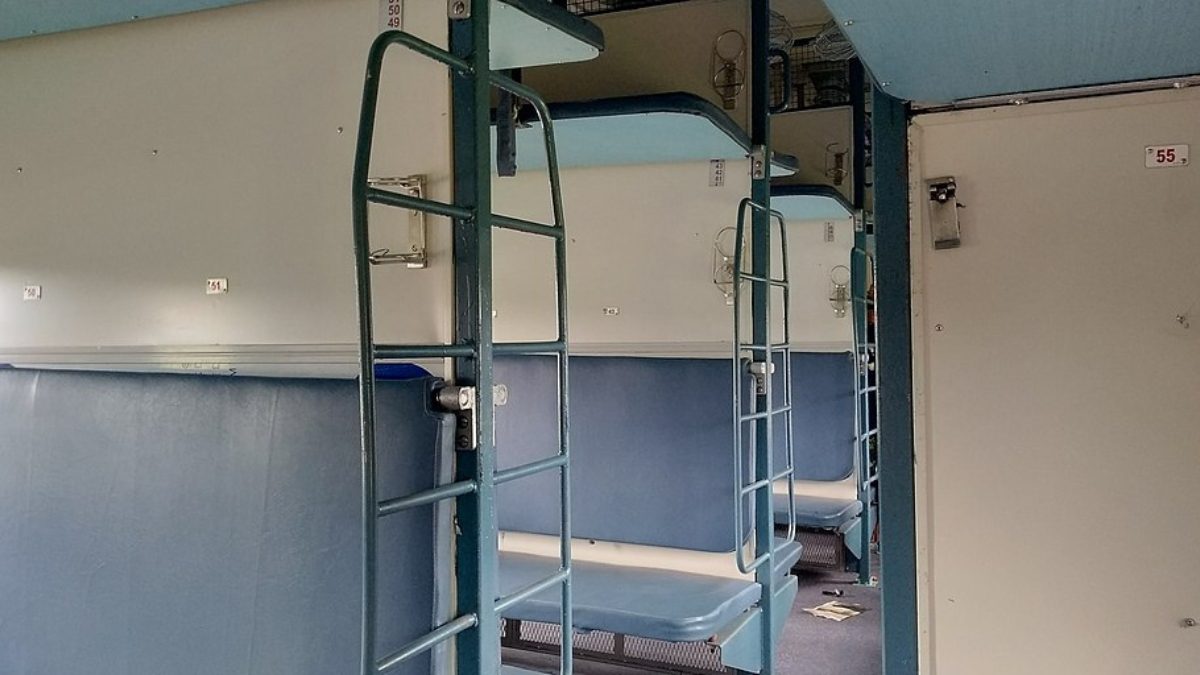In the secret maze of railway travel, a peculiar sight has emerged – sleeper berths transformed into impromptu food storage spaces, laden with crates, water bottles, and paper cups. It’s a clear combination of convenience and compromise, unfolding within the narrow ramps of an express train headed for Chennai. But why do caterers lock doors, obstructing passengers’ pathways, as if guarding a hidden treasure? Well, the absence of designated storage spaces seems to be the answer.
The Food Storage On This Train To Chennai Left The Passengers Shocked
As per reports from the Times of India, passengers aboard an express train to Chennai faced an uncomfortable situation. These passengers were occupying berths in the last sleeper coach. To their disappointment, they discovered that the caterers had obstructed one of the doors by piling crates of food, water bottles, and paper cups. It effectively hinders access to the toilets.
This common practice of stacking food and beverages near restrooms and exits stems from the absence of dedicated storage space. There is an evident lack of pantry cars for caterers and staff belongings on trains. This challenge of limited space has led to an often inconvenient scenario where passengers’ access to berths and facilities is hindered. Travellers frequently witness such arrangements on overnight trains, highlighting the deficiency in the railways’ provision for handling food onboard trains.
As per the reports from Time of India, K Jayakumar, who recently travelled on the Thiruvananthapuram-Chennai express, shared his observations. He shared that a few crates were initially placed under the berths, but catering staff later shifted them closer to the toilets when passengers required space for their bags. This prompted concerns among passengers, leading some to hesitate to purchase tea after observing the placement of containers.
Also Read: Seeing Video Of Delivery Guy Eating Tea-Biscuits As Meal Netizens Say, “Dekh Kar Aansu Aa Gaye”
An Inside Look At Onboard Food Storage
When trains lack pantry cars, caterers collect orders for meals and snacks and procure the items from stations en route. A catering staff shared that due to the scarcity of available storage, they often resort to utilising whatever space is feasible. Their choice usually includes vestibules and passageways.
Sridhar Joshi, a railway enthusiast, also noted that passengers’ decisions to purchase food were influenced by their observations of these storage practices. Yet, a growing number of travellers have adopted alternative approaches, like e-catering and online orders from established restaurants. An ICF official shared that during the introduction of LHB coaches on the Kacheguda Express, provisions for food storage were initially included. However, these were subsequently removed to accommodate more passengers.
Officials from the Indian Railway Catering and Tourism Corporation (IRCTC) also acknowledged the problem, attributing it to design limitations. They stressed that rectification falls within the purview of the railways.
Cover Image Courtesy: Wikimedia Commons

